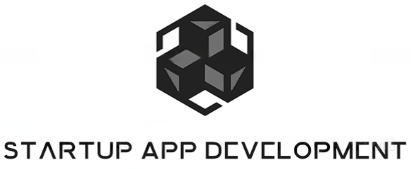Starting a new app can be a thrilling venture yet daunting, especially when it comes to managing costs. With strategic planning and some savvy tips, you can bring your app idea to life without breaking the bank. Here are some essential, budget-friendly strategies to help guide your startup app development process.
1. Prioritize Core Features Over Extras
Focusing on the core functionality of your app is essential when working with a tight budget. Identify the must-have features that solve the main problem for your users. Extras can be added later once your app starts generating revenue. By honing in on the Minimum Viable Product (MVP), you ensure that the foundational elements are rock solid before considering new enhancements. This tactic not only conserves resources but ensures that your app resonates with users from the get-go. Agile development can further simplify this process by allowing you to adapt to user feedback incrementally.
2. Leverage Open Source Technologies
Utilizing open source technologies can significantly cut down costs. These tools are not only free, but they also come with community support, which can be invaluable during development. Explore frameworks and libraries that fit your app’s needs. Platforms such as React Native, which support cross-platform development, enable you to maintain a single codebase, reducing complexity and costs associated with maintaining separate iOS and Android apps.
Some popular open-source resources include libraries from GitHub or collaborative forums like Stack Overflow. Besides cost savings, open-source software often includes previously developed solutions to common development hurdles. This allows developers to stand on the shoulders of giants, implementing complex features without starting from scratch. The time saved here is precious, particularly when developing within tight startup timelines.
3. Outsource Wisely and Use Freelancers
Hiring full-time developers can be expensive. Consider outsourcing specific tasks to freelancers or agencies. Platforms like Upwork or Fiverr allow you to find talented professionals at a fraction of the cost. Focus on tasks like design or certain programming aspects that can be clearly defined and handed off. Outsourcing allows you the flexibility to pay only for the work needed without long-term commitments.
Choosing developers with a proven track record of cost-effective delivery is key. Look for freelancers who can demonstrate previous success in startup environments. The right freelancer can bring fresh perspectives and specialized skills to your project, often accompanied by tools and methodologies that accelerate development. Combine this with proper documentation to ensure continuity and minimize potential integration issues with your in-house efforts.
4. Adopt Agile Development Practices
Embracing agile methods can help streamline the development process, ensuring that you focus on delivering small, functional parts of the app quickly. This approach helps in keeping development aligned with user needs and budget constraints. Agile methodologies emphasize iterative progress, adapting based on user feedback to effectively direct resources where they’re most needed.
This method inherently promotes efficiency and flexibility, aspects crucial to a startup’s success. Employing sprints allows your team to compartmentalize complicated projects into manageable segments, each fulfilling a critical role on its own. With tools like daily scrums and retrospective meetings, team communication becomes a priority, allowing for the rapid identification and resolution of issues as they arise.
5. Test Early and Often
Early and frequent testing helps in catching errors and user experience issues early in the process, saving time and money in the long run. Use prototyping tools to gain user feedback before full-scale development. This approach can prevent costly redesigns and provides vital insights into user behavior and satisfaction.
Prototyping can be conducted using free or low-cost tools like InVision or Sketch, which facilitate quick demonstrations of your app’s user journey. Moreover, introducing automated testing frameworks, such as Selenium or Appium, ensures that you identify bugs before deployment, maintaining app quality and reducing post-launch maintenance expenses.
6. Utilize Free Online Resources and Tools
The internet is filled with a wealth of free resources, ranging from coding tutorials to marketing strategies. Take advantage of blogs, forums, and MOOCs to gain knowledge without spending a dime. Sites like Coursera and edX offer learning modules that are free to audit, permitting you to acquire necessary skills cost-effectively.
Joining developer communities online, such as Reddit or GitHub, not only provides you with insightful discussions but also presents collaboration opportunities. It’s a great way to keep up with trends and changes that could affect your development strategy, ensuring that your app remains contemporary and competitive on a strict budget.
7. Plan for Scalable Infrastructure From the Start
Investing in scalable infrastructure may seem counterintuitive to cutting costs, but it prevents future expenses related to rework and migration. Cloud services often offer affordable solutions that grow with your app. Services like AWS or Google Cloud provide scalable computing power with pay-as-you-go models, ensuring you only pay for what you use without compromising on performance.
Today’s infrastructure solutions, such as serverless architectures or containers through Docker, allow you to initially deploy small-scale solutions which can seamlessly scale. Coupled with effective project management strategies, you can better predict traffic spikes and avoid costly downtimes, all while maintaining a budget-conscious profile.


